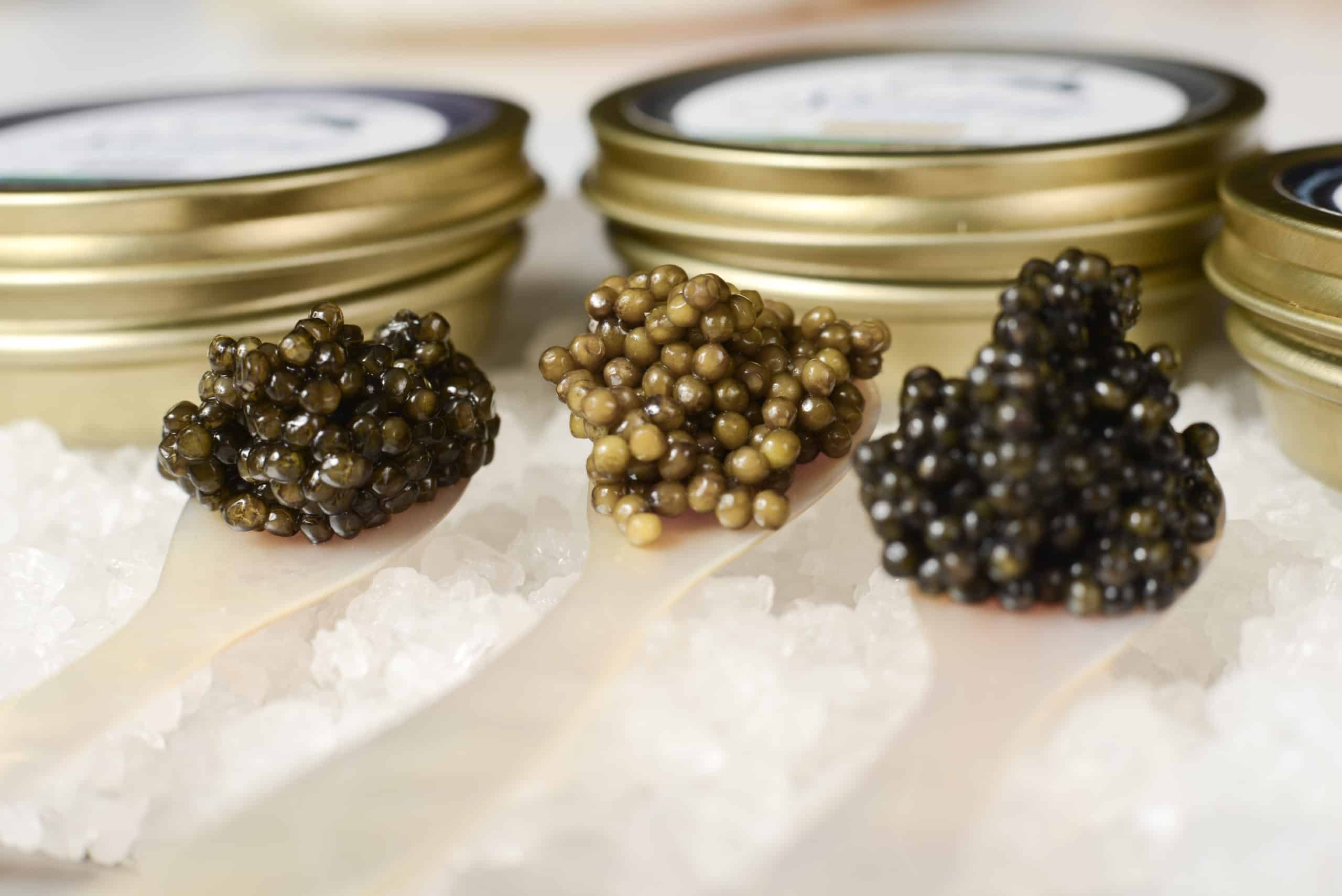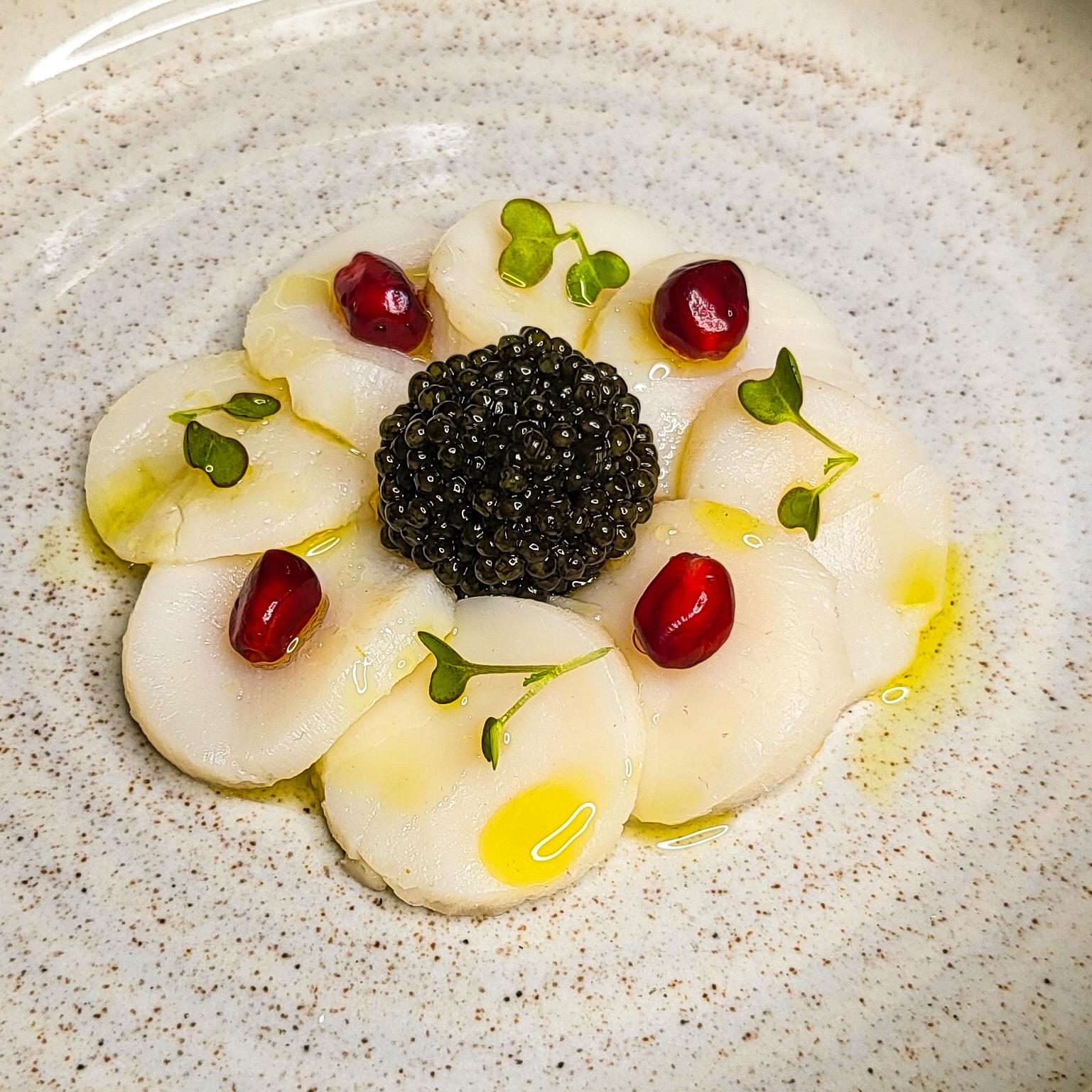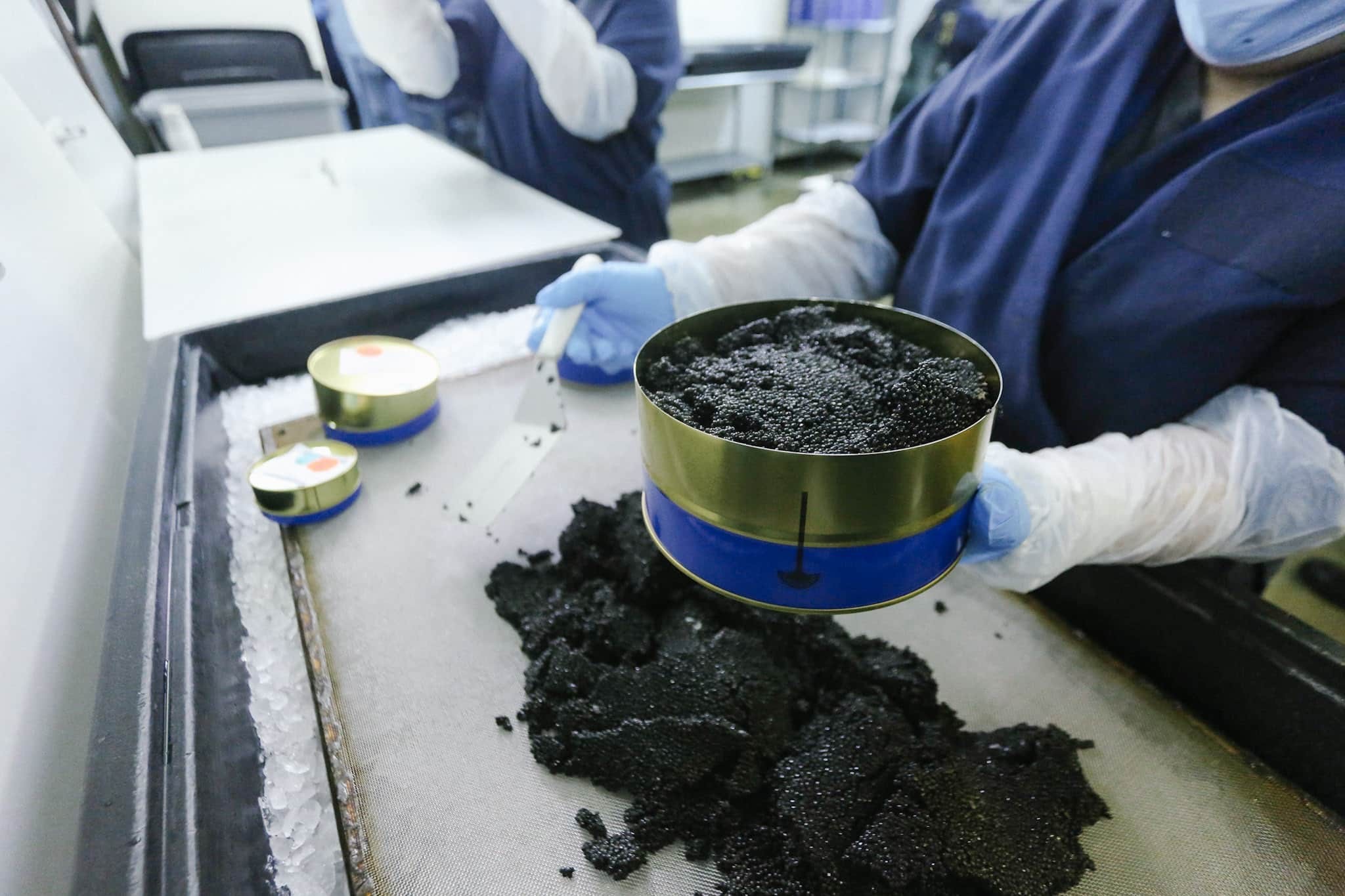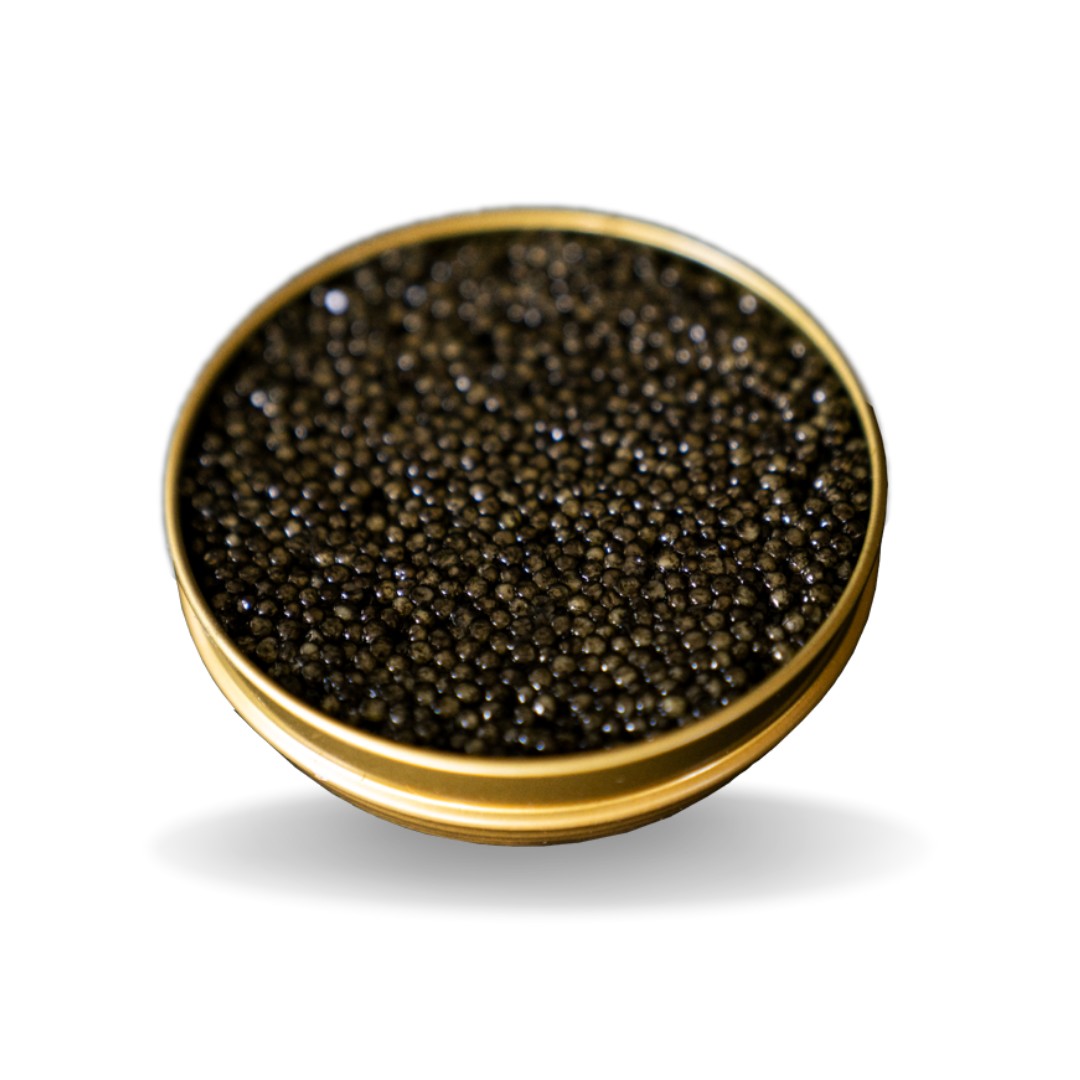Unveiling the Cost: How Much is Caviar and Why is it So Expensive?
Introduction
Have you ever wondered why caviar, especially varieties like Beluga caviar and sturgeon caviar, is so notoriously expensive? This luxurious delicacy, often associated with opulence and fine dining, has long captured the fascination and palates of connoisseurs worldwide. But what exactly makes caviar, the coveted fish eggs, come with such a hefty price tag?
In this blog post, we will delve into the intriguing world of caviar, exploring the factors that contribute to its high cost and understanding why it remains one of the most expensive culinary delights on the market. From the rarity and scarcity of sturgeon roe to the labor-intensive processes involved, we will uncover the secrets behind the expensive price tags attached to these tiny, glistening spheres.
So, how much does caviar cost? And why are caviar prices often considered exorbitant? Join us on this journey as we unravel the mysteries behind the alluring allure of caviar and uncover the truth about the expense that comes with indulging in the finest varieties of fish eggs. From the most sought-after Beluga caviar to the various options available, including some surprisingly affordable alternatives, we will explore the fascinating world of caviar prices and the factors that influence them.
Prepare to dive into the realm of luxury cuisine as we unveil the cost of expensive caviar and discover why this delicacy continues to captivate food enthusiasts and connoisseurs around the globe.
What is Caviar?
Caviar is a delicacy made from the salt-cured roe (eggs) of certain species of sturgeon fish. Originating from the Caspian and Black Sea regions, caviar has a rich history that spans centuries. Its roots can be traced back to ancient times when it was relished by royalty and esteemed as a symbol of luxury.
Traditionally, true caviar specifically refers to the roe of sturgeon fish, but the term has broadened over time to encompass the eggs of other fish species as well. However, in the world of gourmet cuisine, the most highly prized and expensive caviar still comes from sturgeon.
Types of Caviar: Differentiating between various caviar varieties
When it comes to caviar, several distinct varieties stand out, each with its unique flavor profile, texture, and, of course, price tag.
-
A premium caviar variety is white sturgeon caviar from the species acipenser transmontanus. For over 35 years Sterling has been a leading pioneer in sustainable aquaculture practices. Of the 27 wild sturgeon species, white sturgeon is one of the most stable sturgeon populations.
-
The most renowned and expensive caviar is Beluga caviar. Harvested from the beluga sturgeon, which can grow up to 20 feet in length, Beluga caviar is characterized by its large, lustrous eggs that possess a delicate, buttery taste.
-
Another sought-after caviar variety is Osetra caviar. Derived from the Osetra sturgeon, this caviar boasts medium to large-sized eggs with a nutty and creamy flavor. Osetra caviar is highly prized for its nuanced taste and is often considered a gourmet delicacy.
-
Sevruga caviar is known for its smaller eggs and more assertive flavor. Harvested from the Sevruga sturgeon, this caviar tends to be less expensive compared to Beluga and Osetra varieties, making it a more accessible option for caviar enthusiasts.
In addition to these well-known varieties, there are other types of caviar available, including Sterlet, Hackleback Caviar (Shovelnose Sturgeon), and Paddlefish caviar.
While they may not command the same exorbitant prices as Beluga or Osetra caviar, they still offer a delightful caviar experience at a more affordable cost.
Overview of Caviar Production
Caviar production is an intricate and time-consuming process that requires expertise and precision. Historically, sturgeon fish were abundant in the Caspian Sea and Black Sea regions, providing a sustainable source of caviar. However, overfishing and habitat destruction have led to the decline of sturgeon species, many of which are now classified as endangered.
To obtain caviar, sturgeon fish are caught and carefully harvested for their roe. The fish are typically caught using nets or specialized fishing techniques. Once caught, the fish are promptly and gently processed to extract the precious eggs without damaging them.
Caviar producers employ a traditional method called "stripping" or "milking" to obtain the eggs. This process involves carefully massaging the abdomen of the sturgeon fish to release the roe. The eggs are then rinsed, sieved, and sorted by size and quality.
It is essential to note that caviar production is a meticulous and regulated process. Caviar producers adhere to strict quality control standards to ensure that only the finest caviar reaches the market, further contributing to its exclusivity and high price.
As we explore the intricacies of caviar production and its historical significance, it becomes clear why this luxurious and sought-after delicacy commands a premium price tag. From the endangered sturgeon species to the meticulous techniques employed by caviar producers, every aspect of caviar production contributes to its rarity and expense.
If you want to watch a video on how we produce and harvest caviar you can watch our farm video here. Here we take you through the meticulous process of harvesting process.
Factors effecting the Cost of Caviar
Rarity and Scarcity
The high cost of caviar can be attributed to its rarity and scarcity, primarily driven by the declining population of sturgeon, the fish species responsible for producing these prized fish roe.
Sturgeon species, have experienced significant declines in their numbers due to overfishing and habitat destruction. The demand for caviar, coupled with unsustainable fishing practices in the past, has put immense pressure on sturgeon populations, making them vulnerable and rare.
To protect these endangered species, strict regulations and restrictions have been imposed on sturgeon fishing and caviar production. Organizations such as CITES enforce bans and regulations to prevent further decline and promote sustainable practices.
These regulations increase the costs associated with caviar production as producers must comply with strict guidelines and invest in conservation efforts.
Moreover, the limited availability of caviar stems from the finite supply of sturgeon eggs. Sturgeon fish have a lengthy maturation period and do not produce eggs annually like some fish species. Additionally, not all sturgeon produce eggs every year, further reducing the overall supply of caviar.
Almas caviar, for instance, derived from the eggs of wild sturgeon, is known for its exceptional quality and striking golden color. This highly sought-after caviar is stored in special containers made from rare materials like gold or silver, further enhancing its luxury and price.
The combination of declining sturgeon populations, legal protections, and the limited production of eggs creates a scarcity in the market. This scarcity drives up the price of caviar, making it a luxurious and sought-after delicacy.
Labor and Expertise
The high cost of caviar can be attributed to the labor and expertise involved in its production. Harvesting caviar from fish roe, particularly from sturgeon species like the Siberian sturgeon, requires skill and precision. The delicate process of extracting the eggs without damaging them demands experienced hands.
Once harvested, the caviar undergoes a meticulous grading process by knowledgeable professionals. This ensures that only the highest quality caviar reaches the market, adding to its overall cost.
Maintaining optimal storage conditions is crucial due to the perishable nature of caviar. Specialized facilities with precise temperature and humidity control are necessary to preserve the flavor and texture, increasing production expenses.
It's important to note that not all fish roe is considered caviar.
True caviar refers specifically to the roe of the sturgeon family. While other fish eggs, such as salmon roe, have their own unique flavors, they are not classified as caviar. The distinction in quality and rarity contributes to the variations in cost.
Exclusive varieties of caviar, such as the sought-after golden caviar, command even higher prices. These rare types are produced in limited quantities and are known for their exceptional flavors, further adding to their prestige and cost.
Storage and Handling
Proper storage and handling are crucial aspects of the caviar industry, contributing to both the quality and cost of this exquisite delicacy. Caviar, particularly from sturgeon, requires meticulous care to preserve its delicate flavors and textures.
Sturgeon caviar is highly perishable, making appropriate storage conditions essential. Specialized facilities maintain precise temperature and humidity control to ensure the caviar's freshness and prevent spoilage.
The cost of maintaining these controlled environments adds to the overall production expenses and, subsequently, the caviar cost.
Transportation poses additional challenges in preserving caviar's integrity. Given its delicate nature, caviar requires careful handling during shipping to prevent damage and maintain its quality. Reliable logistics and packaging methods are employed to safeguard the delicate eggs, ensuring they reach their destination in optimal condition.
The wild caviar market, characterized by its exceptional quality and limited supply, demands even more stringent storage and handling practices. The rarity of wild caviar increases its value, prompting caviar producers to implement the highest standards in preservation to retain its unique attributes.
Branding and Prestige
Caviar has transcended its culinary status to become synonymous with luxury and prestige, largely due to effective branding efforts.
The association of caviar with exclusivity and refinement has contributed to its allure and elevated its reputation beyond being a simple gourmet delicacy.
The historical significance and cultural connotations of caviar have played a role in establishing its prestige. Enjoyed by aristocrats and nobility for centuries, caviar carries a sense of exclusivity and sophistication, further enhancing its allure.
Branding strategies have also contributed to the prestige associated with caviar. Luxury brands have embraced caviar, utilizing elegant packaging, premium branding, and sophisticated marketing campaigns to cultivate an image of opulence and desirability.
The concept of "true caviar" reinforces its prestige. Caviar derived only from the roe of sturgeon, cured using traditional methods, is considered authentic.
This exclusivity adds to the perception that true caviar is a rare and exceptional delicacy, contributing to its prestige and price.
Fish farms have emerged to meet the high demand for caviar while practicing sustainable methods. However, there is sometimes a perception that only wild caviar possesses true prestige, challenging the branding efforts of fish farms.
Price and Market Factors
The cost of caviar is influenced by market factors that contribute to its perceived value and affordability.
Rarity and limited supply play a significant role in caviar prices, as high-quality roe from certain sturgeon species becomes scarce due to overfishing and habitat destruction.
The grading and quality of caviar also impact its price. Higher-quality caviar, characterized by superior taste, appearance, and texture, commands a premium price in the market.
Branding and marketing efforts contribute to the perceived value of caviar. Luxury brands that invest in packaging, marketing, and exclusivity often attach higher price tags to their products.
However, more affordable options are available from fish farms, offering caviar at a lower price point without compromising taste and quality.
Market demand and economic conditions can affect caviar prices. High demand during peak periods and fluctuations in the economy can lead to price variations. However, there are options for individuals seeking more affordable caviar without sacrificing the experience of indulging in this delicacy.
Alternative Options: Affordable Alternatives to Caviar
Looking for a caviar substitute that won't break the bank? Check out these affordable alternatives:
-
Salmon Roe (Ikura): Bursting with a briny flavor, salmon roe offers a similar taste experience to caviar. Its vibrant orange color and rich texture make it a popular choice.
-
Trout Roe: With smaller, softer eggs and a delicate, earthy taste, trout roe provides an excellent alternative to caviar. Its subtle flavor profile complements a variety of dishes.
-
Whitefish Roe (Golden Caviar): For an elegant substitute, try whitefish roe. Its small, golden beads deliver a mild, buttery flavor that won't disappoint.
-
Tobiko: Add a pop of color and texture to your dishes with tobiko. These tiny, crunchy eggs from flying fish provide a burst of oceanic flavor, often used in sushi and seafood dishes.
-
Vegan Caviar: Plant-based options like vegan caviar offer a creative alternative. Made from seaweed or other plant-based ingredients, it provides a similar appearance and texture to traditional caviar without animal products.
Explore these affordable alternatives to caviar and enjoy the unique flavors and textures they offer. From the briny burst of salmon roe to the elegant golden beads of whitefish roe, there's an option to suit every palate and budget.
FAQs About Caviar
What is beluga caviar, and why is it considered the most expensive caviar?
Beluga caviar is derived from the roe of beluga sturgeon, one of the largest sturgeon species.
It is prized for its large, glossy eggs and delicate, buttery flavor. Beluga sturgeon populations have declined significantly, making their caviar rare and highly sought after, leading to its reputation as the most expensive caviar.
What makes sturgeon caviar so expensive compared to other types of caviar?
Sturgeon caviar, including varieties like Beluga, Osetra, and Sevruga, is generally more expensive due to the rarity and slow maturation of sturgeon fish.
Sturgeon take a long time to reach maturity and produce eggs, and overfishing and habitat destruction have further reduced their numbers. These factors contribute to the limited supply of sturgeon caviar, increasing its price.
Why is caviar generally considered an expensive delicacy?
Caviar is considered an expensive delicacy for several reasons. Firstly, it is sourced from fish species, particularly sturgeon, that have become endangered, resulting in limited supply and higher costs.
Additionally, the meticulous harvesting, grading, and storage processes require skilled labor and specialized facilities, further driving up production costs. These factors contribute to the overall high price of caviar.
How much does caviar cost, and why do prices vary?
Caviar prices can vary significantly depending on factors such as the type of caviar, its quality, and market demand.
High-quality caviar, such as Beluga or Osetra, can cost hundreds or even thousands of dollars per ounce. The rarity, size, color, and flavor of the caviar, as well as its source and reputation of the producer, all influence its price.
What is the most expensive caviar available?
Almas caviar, derived from the eggs of the rare albino beluga sturgeon, is considered one of the most expensive caviars in the world.
Its unique golden color and exceptionally delicate flavor contribute to its exclusivity and high price. Almas caviar is often sold in specially crafted containers, such as gold or silver tins, further enhancing its luxurious appeal.
What is the cheapest caviar?
The cheapest caviar options are typically sourced from fish species other than sturgeon. Salmon roe, for example, is considered a more affordable alternative to traditional sturgeon caviar. Additionally, roe from trout or whitefish can be more budget-friendly while still offering a delightful taste experience.
These alternatives allow individuals to enjoy the essence of caviar at a more accessible price point.
Is expensive caviar always the best?
Expensive caviar is often associated with exceptional quality and taste, but the "best" caviar ultimately depends on personal preference. Different types of caviar offer unique flavors and textures, and what one person considers the best may vary from another's opinion. It's important to explore different varieties and find the one that suits your palate and preferences, regardless of its price.
Are there any sustainable caviar options?
Yes, sustainable caviar options do exist. With the decline of wild sturgeon populations, many caviar producers have turned to sustainable practices and fish farming techniques to meet the demand for caviar.
These farms focus on conservation, responsible aquaculture practices, and the well-being of sturgeon populations, providing a more sustainable and ethical choice for caviar enthusiasts. Look for producers that prioritize sustainability and transparency in their operations.
We at Sterling Caviar are proud to offer a wide selection caviar options. With a deep commitment to the environment, we have implemented responsible aquaculture practices that prioritize the well-being of sturgeon populations and the preservation of their species.
Our caviar is sourced from our own sustainable fish farms in California, where we carefully nurture and raise sturgeon in pristine conditions. By adhering to strict environmental standards and ethical practices, we ensure that our caviar is not only of the highest quality but also produced with the utmost respect for the ecosystem.
When you choose Sterling Caviar, you can indulge in the exquisite flavors of caviar while supporting sustainable and eco-friendly methods. We prioritize transparency, providing you with the peace of mind that our caviar is sourced responsibly.
Discover our best collection of caviar, ranging from classic favorites to unique offerings, all crafted with a commitment to the environment. Experience the luxury of caviar while making a positive impact. Explore our sustainable caviar options today.
Conclusion: How much is caviar and Why is it So Expensive?
Caviar remains an exquisite delicacy sought after by many, but the high cost is justified by factors such as rarity, labor-intensive production, and the prestige associated with it.
However, with the availability of alternative options and a focus on sustainability, caviar lovers can explore a range of flavors and make choices that align with their values.
Whether indulging in traditional or alternative options, the enjoyment of caviar is a true celebration of culinary luxury.






